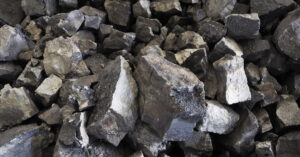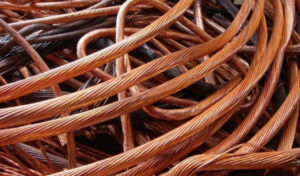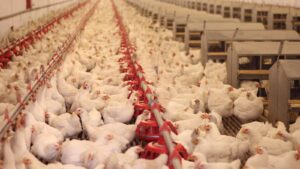
China has increased its imports of semiconductor component manufacturing equipment to a record level ahead of the entry into force of export restrictions by Japan and the Netherlands, the Financial Times reports.
According to the General Administration of Customs of the People’s Republic of China, the volume of imports of equipment for the production of chips in June and July amounted to about $ 5 billion, which is 70% higher than the figure for the same period last year ($ 2.9 billion).
China purchased the bulk of the equipment from the Netherlands and Japan. These two countries announced in January of this year that they would join the U.S. export restrictions on China’s semiconductor equipment.
In Japan, these restrictions will come into effect on July 23, and in the Netherlands – on September 1. Once they come into effect, buyers of equipment will have to obtain special licenses from the governments of these countries.
As the FT notes, the increased imports of chip-making equipment shows that China wants to avoid any disruption to its plans to expand semiconductor production.
“This is one of China’s responses to export restrictions imposed by the Netherlands and Japan,” notes Lucy Chen, vice president at Taiwanese analyst firm Isaiah Research. – Beijing is stockpiling equipment in advance to negate potential supply chain problems.”
China’s imports of Dutch chip-making equipment doubled in June and July compared with May due to increased shipments by ASML Holding NV, FT industry sources said.
ASML chief executive Peter Wennink said on an investor conference call last month that there was strong demand for equipment designed to produce non-advanced chips from Chinese buyers.
Imports from Japan also rose. In addition, there has been an increase in shipments to China of chip-making equipment from Singapore and Taiwan, the FT notes.
CHINA, IMPORT, PRODUCTION, ЧИП

Ukraine in January-July this year reduced imports of coke and semi-coke in physical terms by 63% compared to the same period last year – to 116.485 thousand tons.
According to statistics released by the State Customs Service (SCS), coke imports in monetary terms for this period decreased by 64.1% to $55.411m.
Ukraine did not export coke in January-March this year, as it did in December of the previous year. In April, 668 tons were delivered, in May and June there were no exports, in June exports resumed, total for 7M-2023 was exported 1.352 thousand tons, which is lower than the same period last year by 63.4%.
In monetary terms, it decreased by 66.2%, to $334 thousand. Exports were made to Moldova (100% of shipments in monetary terms), imports were mainly from Poland (93.87%), Colombia (3.70%) and Hungary (1.49%).
As reported, Ukraine in 2022 reduced exports of coke and semi-coke in physical terms by 98% year-on-year to 3.856 thousand tons, in monetary terms by 97.6% to $1.011 million. The main exports were to Hungary (42.63% of supplies in monetary terms), Georgia (37.69%) and Turkey (17.41%).
Ukraine imported 359.192 thousand tons of coke and semi-coke in 2022, which is 54.5% less compared to 2021. In monetary terms, imports decreased by 50.3% to $174.499 million. Imports were mainly from Russia (43.43% of supplies in monetary terms, before the war), Poland (30.07%) and the Czech Republic (13.15%).
As a result of the war, a number of mines and coke plants are located in territories temporarily outside of Ukraine’s control.

Ukraine in January-July this year increased exports of ferroalloys in physical terms by 23.2% compared to the same period last year – up to 299.458 thousand tons.
According to statistics released by the State Customs Service (SCS), in monetary terms, ferroalloys exports decreased by 40.5% to $260.870 mln.
The main exports were to Poland (57.24% of shipments in monetary terms), Turkey (11.36%) and the Netherlands (6.76%).
In addition, during this period Ukraine imported 4.379 thousand tons of these products, which is 72.9% less compared to January-July-2022. In monetary terms, imports decreased by 69% – to $18.561 mln.
Imports were mainly from Armenia (18.37%), India (17.86%) and China (15.15%).
As reported, Ukraine in 2022 reduced exports of ferroalloys in physical terms by 47.7% compared to the previous year – to 349.560 thousand tons, in monetary terms by 46% – to $ 564.136 million. At the same time, the main supplies were made to Poland (53.25% of exports in monetary terms), the Netherlands (13.13%) and Romania (5.66%).
In addition, last year Ukraine imported 20.546 thousand tons of these products, which is 65.5% less compared to 2021. In monetary terms, imports decreased by 59.1% to $72.705 million. Imports were mainly from Norway (22.67%), China (15.60%) and Kazakhstan (14.10%).
The business of Stakhanov and Zaporizhzhya Ferroalloy Plants (NWF and ZZF) was organized by PrivatBank (Kiev) before the nationalization of the financial institution. Nikopol Ferroalloy Plant is controlled by EastOne Group, established in the fall of 2007 as a result of restructuring of Interpipe Group, as well as by Privat Group.

According to the State Statistics Committee, Ukraine in the first seven months of 2023 reduced imports of nickel and nickel products by 77.3% compared to the same period of 2022 – to $8.439 million (in July – $732 thousand).
Ukraine in 2022 reduced imports of nickel and nickel products by 49.9% compared to 2021 – to $59.754 million, aluminum and aluminum products – by 33.4%, to $340.398 million.
At the same time, it reduced imports of lead and lead products by 66.6% to $2.839 million.

Ukrainian companies in January-July this year increased imports of copper and copper products in value terms by 95.6% compared to the same period last year – up to $67.313m.
According to customs statistics released by the State Customs Service of Ukraine, exports of copper and copper products for the period decreased by 26.4% to $43.924 million.
In July, $11.024m worth of copper was imported and $4.491m worth of copper was exported.

Poland’s Ministry of Agriculture and Rural Development said the competent Ukrainian service on Friday adopted a decision on the regionalization of Newcastle disease and lifted in this regard a complete ban on imports of Polish poultry products.
“The ban on imports of hatching eggs, live poultry and untreated poultry products and raw materials has been lifted, with the exception of areas affected by Newcastle disease virus, determined by the competent authority of the Republic of Poland,” the website of the Polish agency said.
According to the report, the restrictions do not apply to products that have undergone treatment that guarantees the destruction of the virus, in accordance with the requirements for the importation into the customs territory of Ukraine of live animals and their reproductive material, food products of animal origin, feed, hay, straw, as well as by-products of animal origin and derivative products, approved by the order of the Ministry of Agrarian Policy of Ukraine № 553 of November 16, 2018.
At the same time, the agency “Interfax-Ukraine” has not yet managed to find on the official websites of the Ukrainian Ministry, as well as the State Service of Ukraine for Food Safety and Consumer Protection relevant information on the lifting of the ban on imports of Polish poultry products to Ukraine.
As reported, on July 13, by the order of the Chief State Veterinary Inspector, a restriction was imposed on the import of hatching eggs, poultry and poultry products from Poland to Ukraine due to the registration of Newcastle disease in the country.
According to Polish mass media reports, the disease was detected for the first time in 50 years at a poultry farm in Bialystok district, where 43.41 thousand chickens are kept for slaughter. The Polish authorities have repeatedly asked the Ministry of Agrarian Policy to allow the export of these products to Ukraine, leaving the ban on supplies only for the regions where the disease was detected.